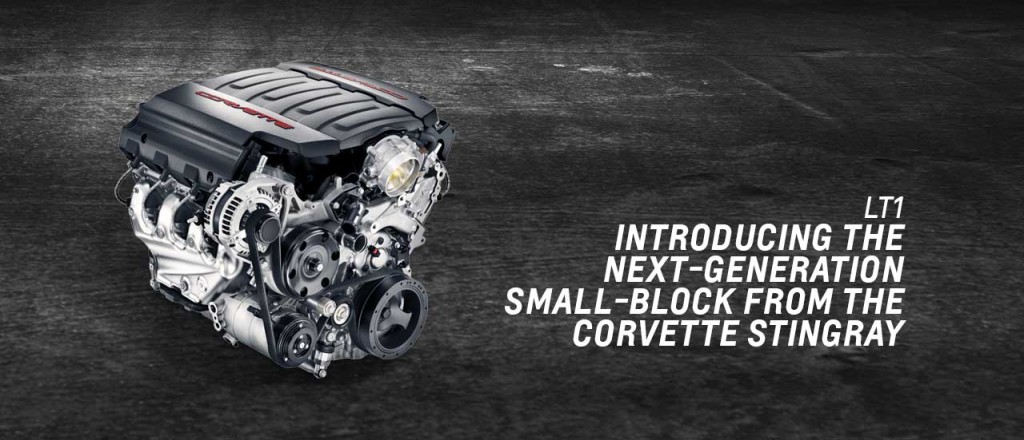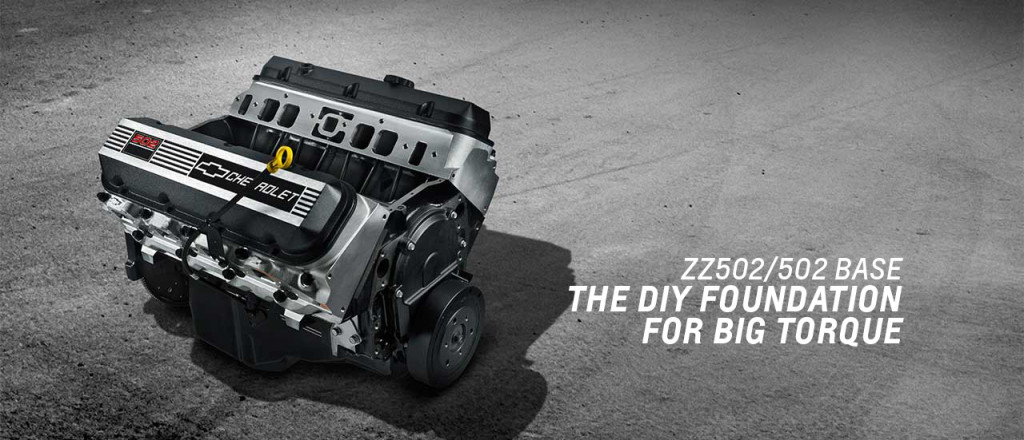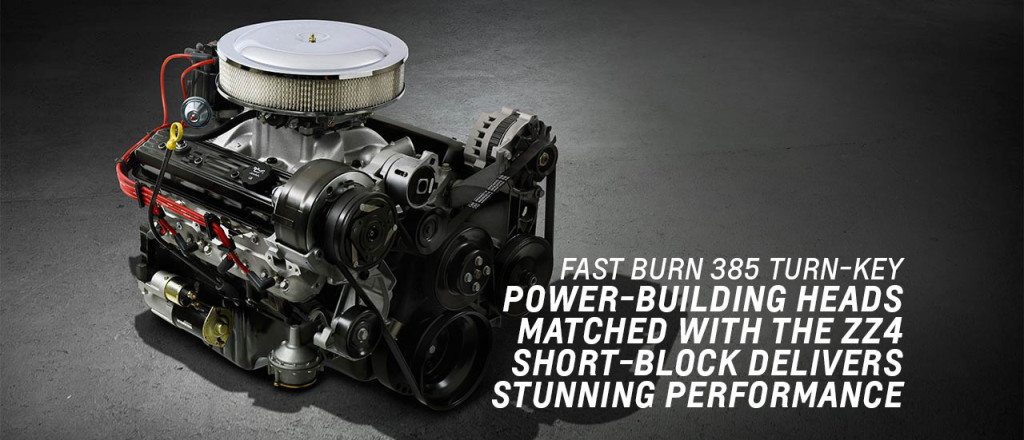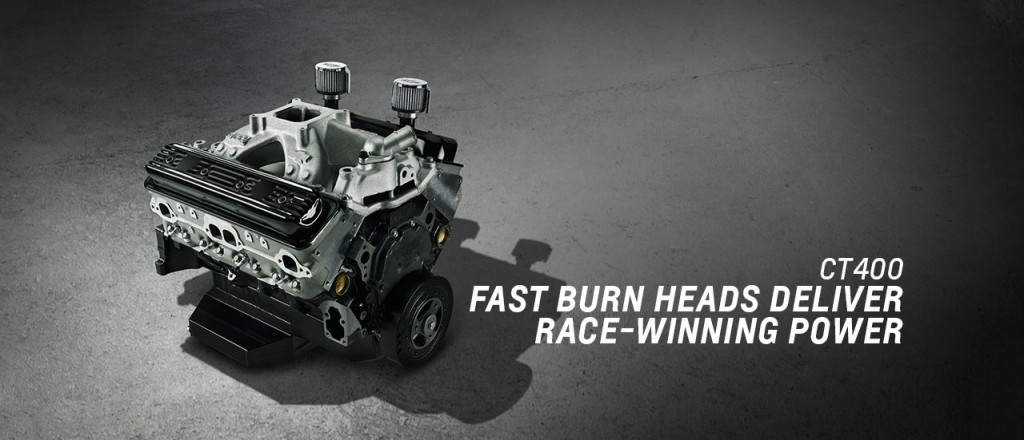
What engine do you want to put into that strip burner you’re planning? This one simple question opens a whole Pandora’s Box. What kind of car will it go into? How much modification are you willing and able to perform if necessary? How much power output do you want and what is allowed for your desired bracket?
If you’ve narrowed it down to an SBC engine, a Small Block Chevy engine, you need to know hat sizes are available. How hard are they to install? What are the specs of engines I can buy and install almost “plug and play”? What sort of mods can be performed on these engines? The following answers a few of those questions to help you get started.
What Is a Small Block Chevy Engine?
First question: What is a Small Block Chevy engine? Simply put, it’s an engine produced by the General Motors Corporation for its Chevrolet unit. An engine is made up of numerous components, the largest of which is the block. The whole rotating assembly is contained in it, unless it’s an overhead cam design.
There are two basic types of internal combustion engines: small block and big block. These terms describe the basic block size. One block casting is usually used for a few different engines. Small blocks V8 engines have sizes, displacements, of usually between 250 cubic inches (CID) (about four liters) to around 380 CID.
The basic parameters of the engine blocks used to make engines of different sizes remain the same. The differences are internal-cylinder diameter (bore), crankshaft stroke length (stroke), piston design, and head design. Some higher performance blocks can only be found being the basis for exclusive high performance engines, but the basic design of the SBC is the same.
What Sizes Are Available?
There are three SBC engines that almost everyone with a little bit of car knowledge has heard of. These are the 305, the 327, and the 350. However, there are more, like the 383. Exactly what sizes are available depends on a couple things:
- Do you want to build your own engine from scratch?
- Do you want to buy and install a pre-built “crate engine”?
- Do you want to buy an almost complete engine (long block) and just add the upper components?
If you choose either of the second two options, you’re limited to the sizes that are available from Chevy or your parts jobber. If you build your own engine from scratch, you can adjust the engine displacement by changing the things I listed above:
- Bore-the diameter of the cylinder opening
- Stroke-the distance the piston travels up and down in the cylinder
- Piston design-Cupped pistons lower compression and increase displacement
- Hemispherical head design versus standard increases displacement
The differences that piston and head design make on displacement aren’t as great as the differences made by changing bore and stroke.
Perusing the Chevy page to see what’s available in their SBC Crate Engine lineup shows us we’re limited to either a 350 or a 383. However, these are turnkey solutions-buy it and install it. Expanding our options a bit, we see other engine sizes such as a 376 CID SBC, and more.
Let’s Take a Closer Look at Available Crate Engine
As I mentioned above, the crate engine sizes that Chevy makes available pretty much covers their whole SBC lineup, from right around 300 cubic inches up to about 400 cubic inches. Exactly what you choose to install will depend on the limitations of your bracket and whether you want a street legal engine or not. Let’s take a look at some of these engines and their output specifications.
- The E-Rod LS3 is the engine found in the Camaros. It displaces 376 cubic inches (6.2 liters) and produces 430 horsepower. This engine is great for those that need a powerful track engine that remains street legal.
- The LSX376-B15 also displaces 376 CID, but it doesn’t come with an induction system. The engine is factory tested (using Camaro intake components) to produce up to 450 hp and more than 400 lb-ft of torque.
- The ZZ383 is an updated version of the classic Chevy 383 stroker engine. This baby is tested to put out 425 horses at 5400 RPM
- The LS9 is another 376 CID engine based upon the classic Chevy 350 block. This version puts out an awesome 638 horses at 6500 RPM
- The LSA is another 376-based engine. This one is complete and is supercharged, producing 556 horses at 6100 RPM
- Another example of the basic 350 block is the Fast Burn 385 Turn-Key engine producing 385 horsepower at 5600 RPM
Long Block versus Crate Engine
Back in the day a rate engine was a complete turn-key solution-buy it, install it, run it. Back then there was also what was known as a long block. Perusing the GM crate engine page I see them selling a number of engines that I consider to be long blocks as crate engines. This is because these engines don’t have intakes, or if they do, there are no injectors or carb installed.
What I call long blocks give you the ability to install the exact intake system you want. This allows you to pump the engine up beyond the quoted output specs by installing better/higher performance components in the fuel intake system.
Let’s take the GM LSA 6.2L SC crate engine. This engine is complete. Buy it, install it, wire it and plumb it, and after installing the intake ducting, it’s good to go. As mentioned above, this engine has been tested to produce 556 hp at 6100RPM. It’s a supercharged and requires next to nothing from you except to connect it to a computer. Everything is there ready for you to install the engine. Harmonic balancer. Check. Water Pump. Check. Spark plugs with coil caps. Check. Although you’ll want to remove them to install headers, it’s even already got exhaust manifolds.
Now let’s go back to the ZZ383 I mentioned, the engine based on the old 383 stroker engines. When you buy this one, you get the block with the rotating components plus heads with sport/performance valve covers, a harmonic dampener and a water pump. Everything else is on you.
Modifying a Small Block Chevy Engine for the Strip
What you do to modify your SBC engine will depend on a number of factors. If you’ve bought a complete crate engine, there isn’t much you can do without opening it up and most likely voiding the warranty. With a long block, you can supercharge, turbocharge (or both!) the engine and go with something like a Holley Dominator 1100 carburetor.
When I’m building an SBC for racing, I build from scratch because it gives me the most options for modifying my engine. You have to keep the limitations imposed by sanctioning bodies in mind, but building from scratch, although it presents its own obstacles, allows you to custom tailor your engine to just squeak in. Let’s take a look at some of the engine mods you can do to a small block Chevy engine.
We start with the engine block itself. If we want to get tricky, we can machine the main journals so the engine will accept a big block crank, giving us more displacement. After that, we can (and should) deck the block-machine it to ensure the head mating surfaces are perfectly flat and smooth. This also works to increase the compression is the combustion chamber, producing more power.
We can install pistons that are designed for boosted (supercharged or turbocharged) engines that lower the base compression a bit, or we can install domed pistons that increase the compression for normally-aspirated engines. To squeeze out a little more displacement and power, we can install “stroked” connecting rods. These increase displacement and compression by increasing the length of the downward stroke that pulls air and fuel into the engine.
A modification that I learned about 35 years ago from an old mechanic that was older than I am now is to swap out the rocker arms on pushrod engines and install adjustable ones. Although properly adjusting them is tricky, adjustable rockers allow you increase horsepower by opening the valves quicker and opening them farther, allowing more air and fuel into the combustion chamber.
Whether you’re going with a carbureted or injected setup, you need an intake manifold that is engineered to produce power. If you plan on using the car at the drag strip, you need to make sure the intake manifold is designed to produce maximum horsepower and torque in the lower portions of the RPM range. If you plan on circle or oval track racing, you want an intake manifold that waits until the upper portions of the RPM range before producing maximum power.
One of the easiest and quickest ways of making an engine produce more power is to compress the air going into the engine. This is called boost and is produced by either a supercharger or a turbocharger. Back in my day, we wouldn’t be caught dead installing a turbocharger on a drag-type car. The reasons for this have been mostly ironed out, meaning you will find a number of drag cars that are single and double turbocharged. I prefer supercharging though. The sound superchargers make is better, and if you’re building a non-street legal dragster, nothing beats the look of a blower and dual carbs sticking out a hole in the hood.






you can not increase displacement or compression by installing a longer connecting rod.
displacement is gained by either increasing the bore or the stroke. compression is gained by reducing the volume of the combustion chamber versus the swept volume of the cylinder.